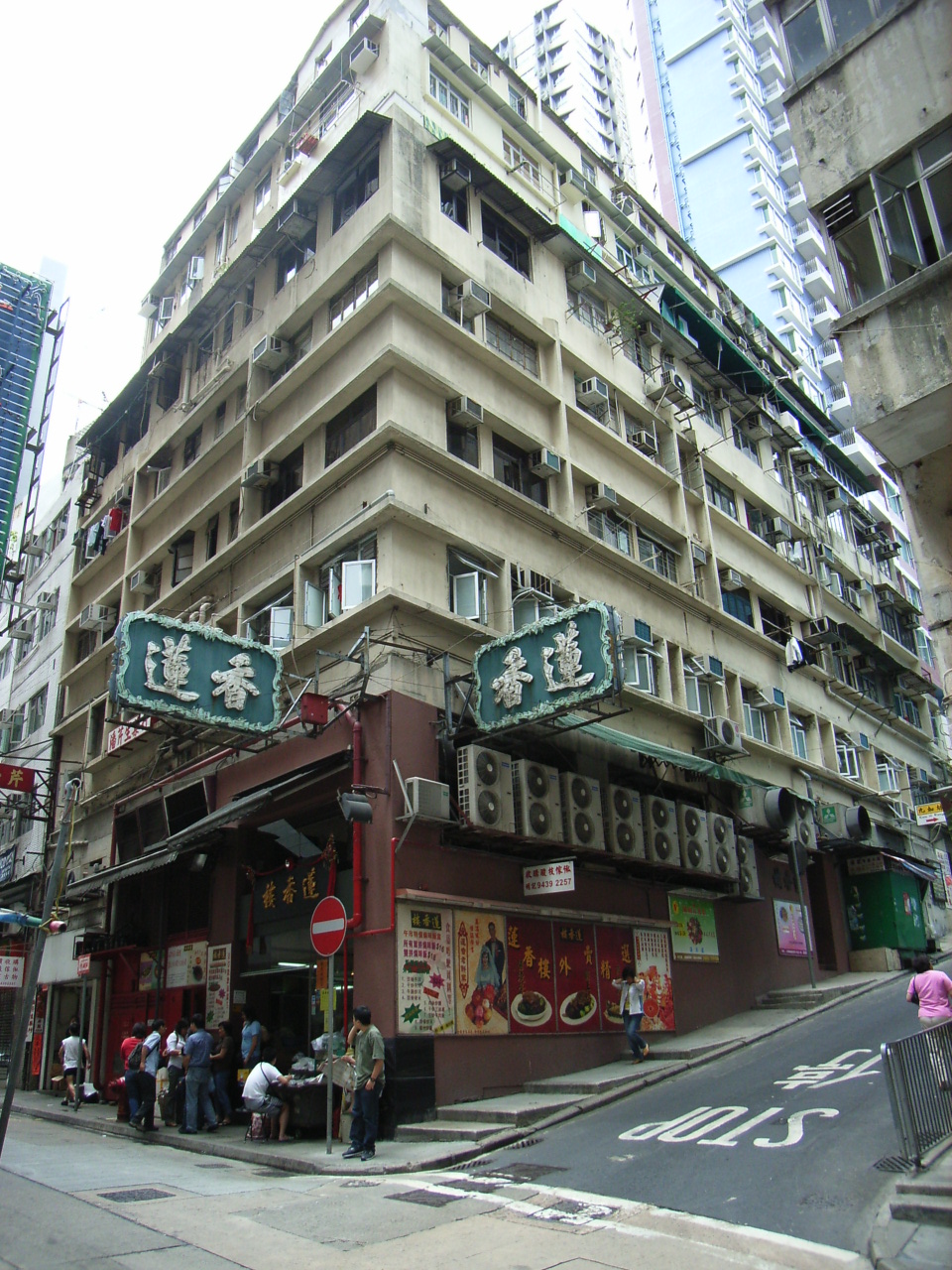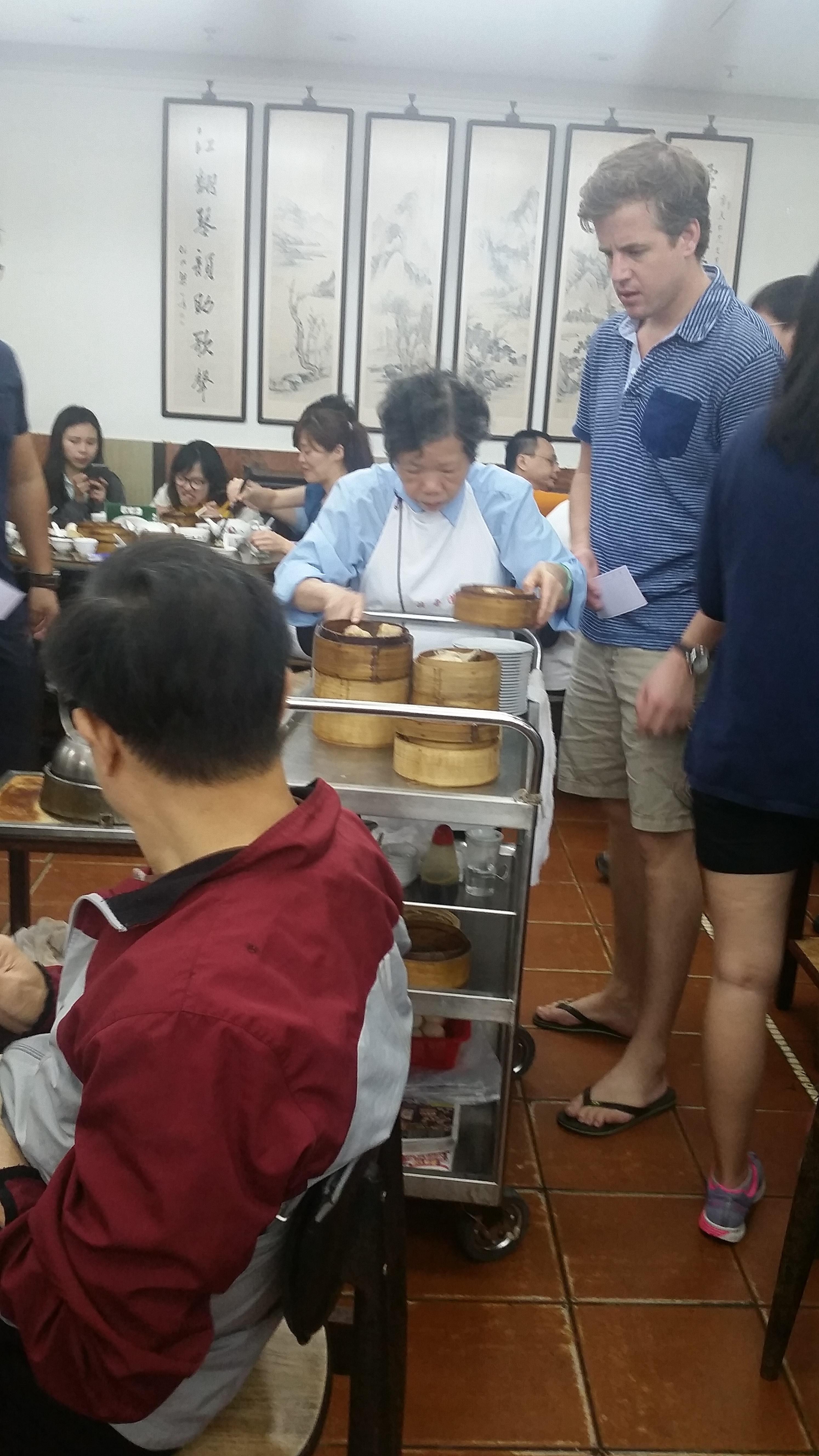Lin Heung Tea House on:
[Wikipedia]
[Google]
[Amazon]






 Lin Heung Tea House () was a two-storey Chinese restaurant located within the Tsang Chiu Ho Building () at 160-164 Wellington Street, at the corner of
Lin Heung Tea House () was a two-storey Chinese restaurant located within the Tsang Chiu Ho Building () at 160-164 Wellington Street, at the corner of
Lin Heung Tea House Website
* Lee Lai Lai,(2013)〈一盅兩件〉, Retrieved from http://linheung.com.hk/lin_heung_tea_house/index2.php * Newspaper, (2013)〈蓮香樓踏入第八十個年頭〉, Retrieved from http://linheung.com.hk/uploadfile/news/20130402200151-6.jpg * Mijune, (2012), HONG KONG – LIN HEUNG TEA HOUSE 蓮香樓 (DIM SUM), Retrieved from http://www.followmefoodie.com/2012/10/hong-kong-lin-heung-tea-house-%E8%93%AE%E9%A6%99%E6%A8%93/ * CNN News, (2009), Lin Heung Tea House: Dim sum elder, Retrieved from http://travel.cnn.com/hong-kong/eat/lin-heung-679607






 Lin Heung Tea House () was a two-storey Chinese restaurant located within the Tsang Chiu Ho Building () at 160-164 Wellington Street, at the corner of
Lin Heung Tea House () was a two-storey Chinese restaurant located within the Tsang Chiu Ho Building () at 160-164 Wellington Street, at the corner of Aberdeen Street
Aberdeen Street is a border street dividing Sheung Wan and Central on Hong Kong Island, Hong Kong. It ascends from Queen's Road Central to Caine Road in Mid-Levels. The street is named after George Hamilton-Gordon, 4th Earl of Aberdeen, ...
, in Central
Central is an adjective usually referring to being in the center of some place or (mathematical) object.
Central may also refer to:
Directions and generalised locations
* Central Africa, a region in the centre of Africa continent, also known as ...
, Hong Kong
Hong Kong ( (US) or (UK); , ), officially the Hong Kong Special Administrative Region of the People's Republic of China ( abbr. Hong Kong SAR or HKSAR), is a city and special administrative region of China on the eastern Pearl River Delt ...
. The 100 year old institution closed its doors on 09 August 2022
History
In 1889, Lin Heung Tea House was first founded inGuangzhou
Guangzhou (, ; ; or ; ), also known as Canton () and alternatively romanized as Kwongchow or Kwangchow, is the capital and largest city of Guangdong province in southern China. Located on the Pearl River about north-northwest of Hong Kon ...
, China. At the beginning of the 20th century, there was a proliferation of tea houses in China. In 1926, two branches were opened in Hong Kong: one in Mong Kok
Mong Kok (also spelled Mongkok, often abbreviated as MK) is an area in Kowloon, Hong Kong. The Prince Edward subarea occupies the northern part of Mong Kok.
Mong Kok is one of the major shopping areas in Hong Kong. The area is characterised ...
, Kowloon and another in Central, Hong Kong Island. In 1980, Lin Heung Tea House moved to the current location and has been located there ever since. Lin Heung Tea House is famous for its authentic and traditional Chinese dim sum
Dim sum () is a large range of small Chinese dishes that are traditionally enjoyed in restaurants for brunch. Most modern dim sum dishes are commonly associated with Cantonese cuisine, although dim sum dishes also exist in other Chinese cuis ...
, attracting international newspapers coverage including features from CNN and TIME magazine.
Lin Heung Tea House has been featured in several films, including ''The Longest Summer
''The Longest Summer'' () is Hong Kong independent director Fruit Chan's second feature in the "1997 trilogy", first released in 1998. The first film in the trilogy is '' Made in Hong Kong''. The movie details the problem faced by a group of d ...
'' (1998) and ''In the Mood for Love
''In the Mood for Love'' is a 2000 romantic drama film written, produced and directed by Wong Kar-wai. A co-production between Hong Kong and France, it portrays a man ( Tony Leung) and a woman (Maggie Cheung) whose spouses have an affair toget ...
'' (2000).
2022, 8 Aug, Lin Heung Tea House announced its closure via its Facebook page. Local media reported it. Lin Heung Tea House alleged to owe employees four months’ wage.
Naming
Lin Heung (lit. "fragrant lotus") Tea House is named after thelotus seed paste
Lotus seed paste is a Chinese dessert ingredient made from dried lotus seeds. It is traditionally considered a luxurious ingredient.
Production
The process for making the paste is similar to that used to make smooth red bean paste. First, the dr ...
, an essential ingredient found in Steamed Lotus-seed-paste Bun, mooncake
A mooncake () is a Chinese bakery product traditionally eaten during the Mid-Autumn Festival (中秋節). The festival is about lunar appreciation and Moon watching, and mooncakes are regarded as a delicacy. Mooncakes are offered between f ...
and the Double-lotus Pie. The lotuses used in Lin Heung House are called Xiang-lians () and they are imported from Hunan
Hunan (, ; ) is a landlocked province of the People's Republic of China, part of the South Central China region. Located in the middle reaches of the Yangtze watershed, it borders the province-level divisions of Hubei to the north, Jiangxi to ...
, China. The brown red Xiang-lians are said to give a smooth flavour. After a Hanlin Academy
The Hanlin Academy was an academic and administrative institution of higher learning founded in the 8th century Tang China by Emperor Xuanzong in Chang'an.
Membership in the academy was confined to an elite group of scholars, who performed sec ...
member called Chan Yu Yue () visited the Tea House, he really appreciated their lotus paste. As a result, he took the Chinese word of lotus into the Tea House's name.
Interior design
Lin Heung Tea House occupies two floors in atenement building
A tenement is a type of building shared by multiple dwellings, typically with flats or apartments on each floor and with shared entrance stairway access. They are common on the British Isles, particularly in Scotland. In the medieval Old Town ...
. While on the ground floor is the Lin Heung Bakery, on the first floor is a Chinese restaurant that serves traditional Chinese dim sum. Traditional Chinese calligraphy and landscape paintings are framed and pinned to the walls.
Services
It has 50 tables and can serve up to 300 patrons. Since there is no host to serve diners in the restaurant, they are required to stand around the tables and get seats for themselves. Waiters will serve diners with cups, a basin for rinsing cutlery and offer them a tally card when they successfully get a seat. Moreover, due to the popularity of the restaurant, diners are expected to share a table.Tea
Lin Heung Tea House provides a variety of Chinese tea, such asOolong tea
Oolong (, ; (''wūlóngchá'', "dark dragon" tea)) is a traditional semi-oxidized Chinese tea (''Camellia sinensis)'' produced through a process including withering the plant under strong sun and oxidation before curling and twisting.Zhongguo ...
, Pu'er tea
''Pu'er'' or ''pu-erh'' is a variety of fermented tea traditionally produced in Yunnan Province, China. In the context of traditional Chinese tea production terminology, fermentation refers to microbial fermentation (called 'wet piling'), and ...
, Jasmine tea
Jasmine tea ( or ) is tea scented with the aroma of jasmine blossoms. Typically, jasmine tea has green tea as the tea base; however, white tea and black tea are also used. The resulting flavour of jasmine tea is subtly sweet and highly fragrant ...
and Shoumei tea
Shoumei (; Standard Chinese pronunciation ) is a white tea that is produced from naturally withered upper leaf and tips, with a stronger flavor reminiscent of lighter oolong teas. It is mostly grown in Fujian Province and Guangxi Province in Ch ...
.
The server provides two teacups for each diner: the bigger one for tea making, and the smaller one for drinking. Patrons need to steep tea in the larger cup and pour it into the smaller one.
Water refilling service is provided when the customers open the lid of the larger teacup as an indication that they would like to have their cups refilled. The staff will soon bring along a huge traditional water kettle and pour the hot water.
Traditional trolleys
The dim sum supply is limited and it is served on traditional trolleys. No pre-ordering service is provided. If diners want to get dim sum, they need to follow the trolleys with the tally card. The server will chop a stamp on it after passing the diners their chosen food.Featured food
Aside from the Lotus-seed-paste Bun, the Tea House offers over 30 kinds of dim sum, includinghar gow
Har gow (sometimes anglicized as "ha gow", "haukau", "hakao"; ) is a traditional Cantonese dumpling served as dim sum.Hsiung, Deh-Ta. Simonds, Nina. Lowe, Jason. 005(2005). The food of China: a journey for food lovers. Bay Books. . p41.
Name
Th ...
, shumai
''Shumai'' () is a type of traditional Chinese dumpling. In Cantonese cuisine, it is usually served as a dim sum snack.Hsiung, Deh-Ta. Simonds, Nina. Lowe, Jason. 005(2005). The food of China: a journey for food lovers. Bay Books. . p 38. In ...
, cha siu bao
''Char siu bao'' () is a Cantonese barbecue-pork-filled ''baozi'' (bun).Hsiung, Deh-Ta. Simonds, Nina. Lowe, Jason. 005 ''The Food of China: A Journey for Food Lovers''. Bay Books. . p. 24. The buns are filled with barbecue-flavored ''cha si ...
. Besides the traditional dim sum where one find in most Chinese restaurants, there are numerous special dishes that can be found only in Lin Heung Tea House. For example, Steamed Chicken Bun (), Shumai Made with Liver (), Whole Winter Melon Soup (), Pa Wong Duck () and eight treasures duck ()
Menu
References
Lin Heung Tea House Website
* Lee Lai Lai,(2013)〈一盅兩件〉, Retrieved from http://linheung.com.hk/lin_heung_tea_house/index2.php * Newspaper, (2013)〈蓮香樓踏入第八十個年頭〉, Retrieved from http://linheung.com.hk/uploadfile/news/20130402200151-6.jpg * Mijune, (2012), HONG KONG – LIN HEUNG TEA HOUSE 蓮香樓 (DIM SUM), Retrieved from http://www.followmefoodie.com/2012/10/hong-kong-lin-heung-tea-house-%E8%93%AE%E9%A6%99%E6%A8%93/ * CNN News, (2009), Lin Heung Tea House: Dim sum elder, Retrieved from http://travel.cnn.com/hong-kong/eat/lin-heung-679607
External links
* {{coord, 22.284294, 114.153446, display=title Central, Hong Kong Restaurants in Hong Kong